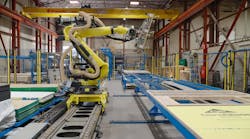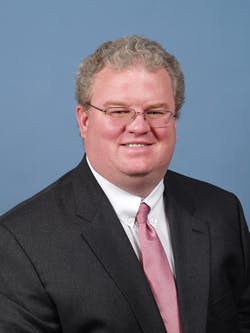At a recent meeting of the Honeywell Users Group (HUG) for Buildings, Honeywell’s Greg Turner, vice president, global offerings, said BACnet is winning its long-running competition with LonMark because BACnet products are easier to deploy, commission, and troubleshoot. After the meeting, HPAC Engineering followed up with Turner.
Turner: First let me say that Honeywell supports both LonWorks and BACnet. Honeywell was one of the early members of LonMark and LonWorks. And we think LonMark really did open the door in the HVAC world to open systems. Meanwhile, while the ASHRAE standard for BACnet was evolving, it was adopted by our customer base much earlier in Europe than it was in the Americas. But in the last four years or so, we have seen a very rapid acceleration of BACnet in our customer base — particularly as BACnet moved from BACnet MS/TP to BACnet IP at the plant-controller level. I think that probably reflects the fact that our customers tend to build relatively large systems with relatively high amounts of data throughput. IP made that possible. It got rid of some of the constraints of the MS/TP bus.
The Lon bus, meanwhile, from the beginning was relatively noise-sensitive. It was fairly sensitive to ground faults and other types of anomalies that occur from time to time during the installation and operation of a building. So although it has a relatively high data rate, we did see a lot of problems both in the initial commissioning and, more importantly, after the building was commissioned, with things such as a Lon connection to a variable-speed drive picking up noise from the drive and degrading the quality of the communication.
As technology has evolved and as we’ve moved beyond a single long multi-drop bus to much more of a segregated bus structure, it has automatically become easier to troubleshoot controls systems, and that would have happened with Lon or with BACnet. But we found that the BACnet MS/TP and certainly the BACnet IP standard have been very easy for us to troubleshoot and to project and manage the throughput and the capacity of in a way that we didn’t always find possible with Lon. It’s certainly nice that it doesn’t require specialized cabling; we don’t worry as much about fluorescent lighting noise or variable-speed drive noise that can be encountered in a big plant room.
I think one of the other big advantages to BACnet is that there are so many tools in place that are vendor-neutral. It is almost an open-source environment, where people continuously innovate on top of the protocol on top of the standard to improve not only the functionality of the controllers but also the engineering, installation, and commissioning tools. So we see it as a community that is thriving, and give ASHRAE a lot of credit for pulling that together.
HPAC Engineering: What does the future hold?
Turner: There is always going to be a competition for new standards. Obviously the open standard, which would take HVAC even further into the world of IT, with an HTML-type protocol, is out there, and I would say I don’t see us returning to Lon necessarily. I do think we will continue to see the standard evolve. We are already seeing it with BACnet MS/TP and BACnet IP, the balance there is shifting pretty rapidly. In a few years we are going to see IP all the way to the controller. Maybe even all the way to wall module for everything. And I think we’ll continue to see new standards evolve.
One of the big things that is going to evolve in all of the standards is dramatic increases in security. It has become very apparent that industrial and building management systems are one of the targets these days for hackers. So open protocol by its nature can make it easier to attack, and I think we are going to see real improvements in the standards over the next few years to address that.
One of the other things that I think is a positive about BACnet is that it started very much as a standard control-system language. That was the way ASHRAE developed it. But when we made the acquisition of INNCOM, we immediately developed and deployed a BACnet gateway for INNCOM for lighting control. BACnet is becoming very much the low-voltage language of the building, not just the HVAC language of the building, and I see that as a very positive step.
We do a fair amount of BACnet IP over wireless today. It is certainly not, from a protocol perspective, designed for lightweight, low-power. I think that is certainly an area where the standard will probably get enhanced and evolve. But already today there’s a fair amount of BACnet over wireless and it is very successful. With LonWorks we did a lot of wall modules and thermostats over wireless, but the high-speed nature of the Lon backbone didn’t lend itself to wireless in the way that BACnet does. BACnet IP over wireless is certainly easier from a deployment perspective.
Looking to the future, one of the things that we are very pleased about with the BACnet standard is that it is continuing to evolve relatively rapidly. We are watching Europe. We see that in many cases the new objects and leading edge of BACnet come from some of our key European customers. To that extent we’re currently working on a couple of standards out of Germany — the AMEV standards — and adding that functionality to our controllers and our front-end. It positions us well to support not only the current 1.12 standard for BACnet but also a set of objects that go beyond that.
As a player that positions itself to play in the high end of the marketplace, Honeywell wants to make sure we not only have conformance or compliance to the standard, we’re constantly pushing out some of the newer technology, the newer functionality in the standard, testing it out and learning from it even before it becomes mainstream.










